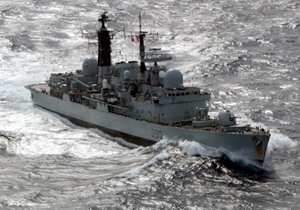Early in the morning Mar. 8, Malaysia Airlines Flight 370 took off from Kuala Lumpur, the country's capital, bound for Beijing. Four days after the flight disappeared from radar contact and no sign of it has been found on land or sea. Now, American naval forces are joining the international search effort with several pieces of high tech equipment that may provide some answers.
Navy on the way
Stars and Stripes reported that two U.S. Navy destroyers, the USS Kidd and USS Pinckney, are now engaged in search efforts for the missing Malaysian Airlines flight. While the Arleigh Burkle-class guided missile destroyers are normally mobilized for their impressive offensive capabilities, the Kidd and Pinckney also host MH-60R Sea helicopters with infrared scanners. This will allow the destroyers to conduct searches around the clock.
Both destroyers were conducting training exercises in the South China Sea when the flight went missing. They were quickly rerouted to aid in the international search effort that includes Vietnamese, Chinese and Malaysian forces.
Also joining the Kidd and Pinckney is a P-3C Orion long range patrol aircraft stationed at Kadena Air Base in Okinawa, Japan. The Orion may represent the greatest potential to find evidence of the missing airliner which was carrying 239 people, including three Americans. The Navy explained that Orion aircrafts specialize in long range and large scale surveillance. Initially designed to detect submarines hiding below the surface of the ocean, P-3C Orions now boasts precisely tuned scanning equipment that can identify small pieces of debris floating among the waves.
Racing against time
While the area of focus continues to be periodically widened by officials as no evidence is found, the U.S. destroyers will concentrate their efforts on a large strip of water where the South China Sea meets the Gulf of Thailand. CBS News reported that Malaysia Airlines officials are baffled by the sudden disappearance of the plane from their radar systems only two hours after takeoff. Some believe that the plane may have attempted to turn around and land back in Kuala Lumpur, or that it veered to the east and crash landed somewhere in the South China Sea.
"All angles are being looked at. We are not ruling out any possibilities," Malaysia Airlines told CBS News.
A complicating factor in the search is the lack of central coordination. With no sign of the plane in any country's territorial waters, no single entity can claim jurisdiction over the efforts.

